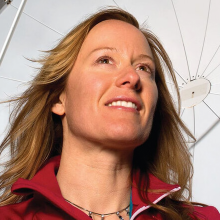SETI
Are we alone in the universe? Are there advanced civilizations that we can detect and what would be the societal impact if we do? How can we better the odds of making contact? These questions are both fundamental and universal. Today’s generation is the first that has the science and technology to prove that there is other intelligence in the cosmos. The SETI Institute’s first project was to conduct a search for narrow-band radio transmissions that would betray the existence of technically competent beings elsewhere in the galaxy. Today, the SETI Institute uses a specially designed instrument for its SETI efforts – the Allen Telescope Array (ATA) located in the Cascade Mountains of California. The ATA is embarking upon a two-year survey of tens of thousands of red dwarf stars, which have many characteristics that make them prime locales in the search for intelligent life. The Institute also uses the ATA to examine newly-discovered exoplanets that are found in their star’s habitable zone. There are likely to be tens of billions of such worlds in our galaxy. Additionally, the Institute is developing a relatively low-cost system for doing optical SETI, which searches for laser flashes that other societies might use to signal their presence. While previous optical SETI programs were limited to examining a single pixel on the sky at any given time, the new system will be able to monitor the entire night sky simultaneously. It will be a revolution in our ability to discover intermittent signals that otherwise would never be found. The search has barely begun – but the age-old question of “Are we alone in the universe?” could be answered in our lifetime.








